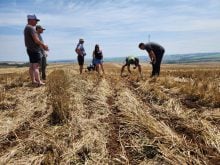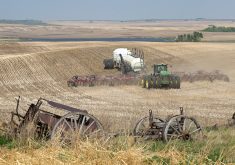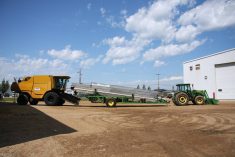LACOMBE, Alta. – A common fungus found in soil has potential to control fusarium in peas.
Peas infected with fusarium oxysporum seemed to manage better when a fungus called trichoderma was present in the soil.
“We noticed one year in some of the plots that had the trichoderma in it, the plants were actually healthier even though they had been infected with fusarium,” said Robyne Bowness, a plant pathology technologist at Agriculture Canada’s Lacombe Research Centre. She spoke at a recent crop field day held at Lacombe.
Read Also

Working groups established to address challenges in the containerized and bulk movement of commodities
CN is working with the pulse and special crops sector on resolving challenges in shipping those commodities.
Further greenhouse work showed the plants stood up better when exposed to this fungus and studies in the field showed it might have potential as a biological seed treatment.
Pulses with their large root systems seem more susceptible to soil borne fusarium. It interferes with the plant’s ability to fix nitrogen in the roots.
While fusarium is a common problem in Alberta peas, a greater challenge is ascochyta blight. Developing a resistant plant is nearly impossible because of the complicated genetic structure of ascochyta mycosphaerella so more time is devoted to testing the efficacy of various chemistries.
Agriculture Canada pea breeder Deng-Jin Bing is working to increase yield and strength of the plants.
“We are the largest pea exporter in the world. Canada produces 25 percent of the peas in the world and exports 50 percent of what it grows,” he said.
Besides bigger, healthier stands of peas that are easy to harvest, he is looking for varieties that could carry resistance to ascochyta and powdery mildew, the white film found on the leaves.
The work encompasses seven different types of peas but Bing warns that releasing new varieties takes up to 10 years.















